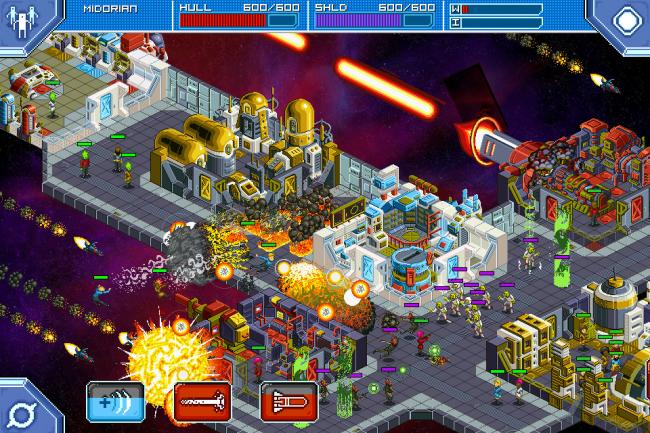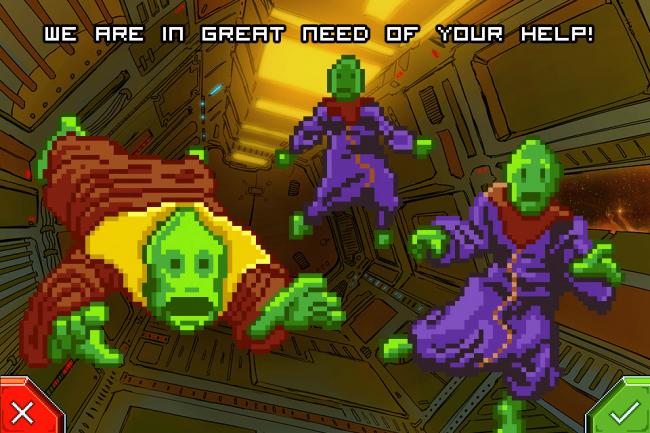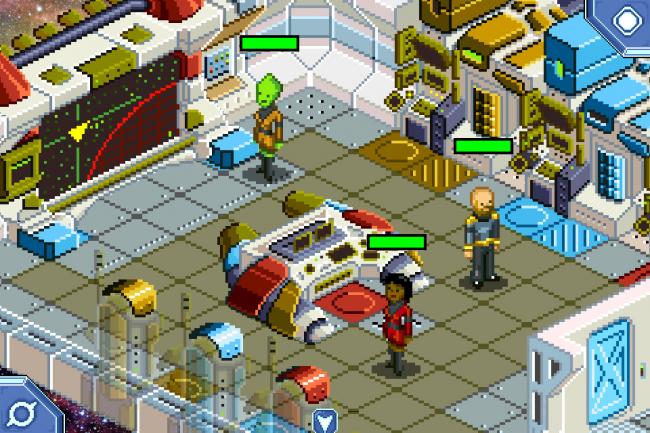- Wondering how to get Monopoly GO! free rolls? Well, you’ve come to the right place. In this guide, we provide you with a bunch of tips and tricks to get some free rolls for the hit new mobile game. We’ll …
Best Roblox Horror Games to Play Right Now – Updated Weekly
By Adele Wilson
Our Best Roblox Horror Games guide features the scariest and most creative experiences to play right now on the platform!The BEST Roblox Games of The Week – Games You Need To Play!
By Sho Roberts
Our feature shares our pick for the Best Roblox Games of the week! With our feature, we guarantee you'll find something new to play!Type Soul Clan Rarity Guide – All Legendary And Common Clans Listed!
By Nathan Ball
Wondering what your odds of rolling a particular Clan are? Wonder no more, with my handy Type Soul Clan Rarity guide.
Star Command Review
If science fiction has taught us anything, it’s that humans are frail little monkeys that probably don’t belong in space. Yet despite our primitive minds and color-coded tunics, we often set a course for exploration and adventure among the stars. But as the crew in Star Command learns all too well, those stars might not be as welcoming as we’d hope.

Live long, prosper, and leave a good looking corpse.
If science fiction has taught us anything, it’s that humans are frail little monkeys that probably don’t belong in space. Yet despite our primitive minds and color-coded tunics, we often set a course for exploration and adventure among the stars. But as the crew in Star Command learns all too well, those stars might not be as welcoming as we’d hope.
Equal parts homage to Star Trek and strategy games, Star Command puts players in charge of their very own spaceship and its dedicated crew. Initially you’ll be a part of Star Command, a space-faring human organization, but before long your crew will be framed for a crime they didn’t commit and find themselves on the run across the galaxy, encountering strange new life and new civilizations… most of which want to kill you.
There’s a story that unfolds as you explore the uncharted regions of space, but for the most part, every encounter will break down into a frenzied exercise in combat.
On the one hand you’ll have ship vs. ship combat, as players command individual crew members to operate different stations to ensure their success in battle. Running concurrent with this is crew vs. crew combat. Enemies will all too frequently beam aboard your ship with their phasers set to kill, and you’ll need to turn the firefight back on them if you want to survive.
Since both ship and crew combat occur simultaneously, you’ll be balancing the individual actions of everyone on your crew at the same time. Do you take your weapons officer away from his station at the plasma torpedoes to step in and fight off the alien Vocar that has invaded your ship? Should you have your science officer abandon their post in the shield boost room so that they can provide medical support to your weapons officer? And while all this is happening, who’s putting out the fires caused by the last attack on your ship?
It sounds like a lot – and from a certain perspective, I suppose it is – yet Star Command manages to offer up a perfect blend of complex situations and simple actions. While you may be faced with a large number of important decisions at any given time, the choices you’ll need to make aren’t terribly deep, and you’ll be able to execute any of them with a tap or two of your finger.

With the exception of the captain, there are three types of assignments crew members can take on: weapons, science, and engineering. In a pretty obvious nod to the game’s inspirations, their uniforms are red, blue and yellow respectively.
Each crew assignment can serve two functions: operating a room and providing direct assistance. Weapons officers can be assigned to any weapons station and can take an active role in crew vs. crew combat. Science officers can run science stations and heal crew members. Engineers can work in engineering rooms and can do repairs, like putting out fires and fixing structural issues. Any crew can be reassigned to any job type, so you’ll never be at a loss because all of your weapons officers have died in combat, or your healers didn’t manage to heal themselves (what martyrs, they are!)
As they perform their jobs, each crew member can level up and attain new special skills based on their level. Likewise, safely completing engagements will earn you currency that can be spent to purchase additional crew, as well as upgrades for the different rooms aboard your ship. All in all, both the crew and ship management portions of Star Command can be summed up in three words: satisfyingly simple strategy.
Balancing the strategic nature of crew management is the very arcadey twist on ship-to-ship combat. Rather than using critical thought, you’ll need to complete a different minigame to fire each weapon, and how well you perform dictates how much damage you’ll end up doing. Each weapon is a quick burst game about timing, so veterans of WarioWare should feel right at home here. And since opportunities to attack aren’t too frequent (your crew needs time to ready each weapon between shots fired), you’ll want to make every minigame count.

In terms of presentation, the game is rife with pixelated charm and a great soundtrack that should strike a chord with trekkers. There’s a good sense of humor to the proceedings, and while not visually similar, there’s no question that certain races share personality traits with some of the archetypes you’d find in the Star Trek universe. Again – for fans, it’s delicious. In fact, the entire “rogue agents in Star Command setting you up” premise reminded me of a storyline from the first season of Star Trek: The Next Generation. Stuff like this is a great touch, but never manages to alienate players who have just come for the gameplay. As much as fans will appreciate the Star Trekiness of it all, gamers who can’t tell a Tribble from a Klingon should enjoy what Star Command just as easily.
As much fun as we had with the game, though, Star Command isn’t without its frustrations. For example – when your ship is damaged, parts of your hull can break off and create a vacuum that will suck surrounding crew out into space. Because passageways are so narrow, this can create situations where you’ll be trapped on one end of the ship while the enemy is wreaking havoc on the other..
Enemy AI isn’t terribly smart, either. On more than one occasion I witnessed hostile alien forces getting sucked out of those very same holes simply because they decided to venture too close. With the amount of craziness that every fight brings, though, I’ll try not to look a gift horse like this in the mouth.

Ultimately though, Star Command‘s biggest problem is one that plagues plenty of games: every mission starts to feel the same after a while. You’ll have different combinations of personnel, upgrades, and enemies, but in the end it’s a very “lather, rinse, repeat” experience, and a far cry from what was promised in the game’s initial Kickstarter pitch. There’s no diplomacy, no away missions, no derelict spaceships to explore – Star Command is just a game of strategic combat. If you’re signing up for the full on Star Trek experience, you’re going to find Star Command lacking.
Having said that, at least the repetitive nature of Star Command is still an “edge of your seat” kind of repetitive. You may know the steps you need to take, but with so much going on, it’s easy to make a mistake that can really up the challenge. And the longer you play for, the tougher things get.
If you’re looking for a simple strategy game that’s funny, frenzied, and dripping with style, you’d have a hard time doing better than Star Command. And besides – if you won’t travel the stars to introduce humanity to a surprisingly hostile galaxy, who will?

The good

The bad
More articles...
Monopoly GO! Free Rolls – Links For Free Dice
By Glen Fox
Wondering how to get Monopoly GO! free rolls? Well, you’ve come to the right place. In this guide, we provide you with a bunch of tips and tricks to get some free rolls for the hit new mobile game. We’ll …Best Roblox Horror Games to Play Right Now – Updated Weekly
By Adele Wilson
Our Best Roblox Horror Games guide features the scariest and most creative experiences to play right now on the platform!The BEST Roblox Games of The Week – Games You Need To Play!
By Sho Roberts
Our feature shares our pick for the Best Roblox Games of the week! With our feature, we guarantee you'll find something new to play!Type Soul Clan Rarity Guide – All Legendary And Common Clans Listed!
By Nathan Ball
Wondering what your odds of rolling a particular Clan are? Wonder no more, with my handy Type Soul Clan Rarity guide.







